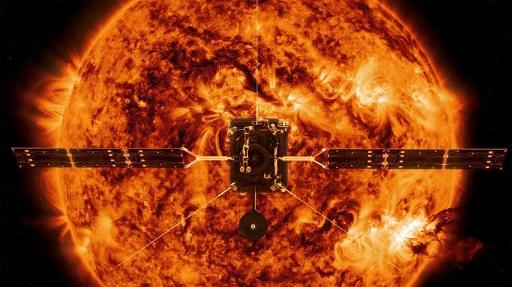The Solar Orbiter mission, with Belgian-built equipment on board, is going to explore the Sun to better understand the particle-charged storms it emits so humanity can protect itself.
The European Space Agency (ESA), in conjunction with NASA, launched the satellite in Cape Canaveral in Florida on Sunday. There will be ten scientific instruments on board, weighing a total of 209 kg. One of the instruments, an Extreme Ultraviolet Imager (EUI), is Belgian and was designed at the Liège Space Centre, which also helped to design two of the other instruments.
The EUI will take high-resolution images of the very hot areas of the solar corona.
After orbiting Venus and then Mercury, the satellite (maximum speed 245,000 km/h) will come to a stop 42 million kilometres from the Sun, which is less than a third of the distance between the Sun and Earth.
“This way, Solar Orbiter will be able to look at the Sun directly,” Mathieu Berthomier, CNRS (National Centre for Scientific Research) researcher for the Physics and Plasmas laboratory at the Polytechnical School, told AFP.
The European probe has six imaging instruments on board, so will be able to capture images of our Sun from a distance never achieved before. We will be able to see the Sun’s poles for the first time, as we have only seen the Equator region so far. Four other in-situ measuring instruments will explore the environment around the Sun.
The main objective of the mission is to “understand how the Sun creates and controls the heliosphere,” which is the bubble of matter around the Solar system, said Anne Pacros, head of mission and cargo at ESA.
This bubble bathes in a permanent pool of particles called solar winds, which are sometimes disrupted by storms, caused by flares that project a cloud of magnetic fields and charged particles out into space.
The storms are difficult to predict. When they hit Earth’s magnetosphere, they create the beautiful but inoffensive aurora borealis (northern lights).
But they can also be dangerous as their flares can disrupt radars in the sky above Earth (like on 2015 in Scandinavia) and radio frequencies and also damage satellites.
“Imagine if half the satellites in orbit above Earth were destroyed, that would be a catastrophe for humanity!” said Berthomier. This why it is necessary to be able to better predict these solar storms.
The ESA-led mission cost €1.5 billion and was launched from the Kennedy Space Centre in Florida, on board an Atlas V 411 rocket on Sunday night.
"I think it was perfect. You suddenly really feel connected with the solar system," Daniel Muller from ESA’s project said shortly after the launch. "We are here on Earth and launch something that will go close to the Sun."
Every six months, the probe will be the closest to the Sun, at a distance of only 42 million kilometres. It is protected by a heat shield, because of the extreme temperature of about 600°C.
Its journey will take 2 years, and the scientific mission between five to nine years. The new data will complement those of the NASA Parker probe, which was launched in 2018 and went much closer to the star’s surface (7 to 8 million kilometres) but without direct observation technology.
The Brussels Times

